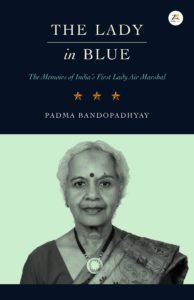
Discovering the Power of Personal Narratives in the World of Book Publishing
How challenging can it be, writing about one’s own life? As it turns out, quite challenging indeed! But with the right direction and structure, writing a memoir, autobiography, or biography can become one of the most rewarding storytelling experiences of your life.
In today’s fast-growing publishing industry, particularly in India, life stories—whether of known personalities or everyday heroes—are drawing increasing interest. Book publishers in India, both large and independent, are seeking real-life stories that can reach a wider audience, offer inspiration, and reflect authentic voices.
It is important to understand that, though they are often used interchangeably, an autobiography, biography and memoir are fundamentally different from each other. Understanding this makes it easier for the writer to decide how they want their story to be told. At their most basic, all three fall under the non-fiction category. But that is where the similarities end. Read about differences between memoir and autobiography, autobiography and biography and more.
Biography, Autobiography and Memoir: What’s the Difference?
It’s crucial to understand the distinction between these three closely related literary genres. Although each falls under non-fiction, they serve unique storytelling purposes:
| Category | Definition | Key Characteristic | Example (Indian context) |
|---|---|---|---|
| Biography | Written by someone else about a person’s entire life | Third-person, factual, chronological | Indira Gandhi: A Life in Nature by Jairam Ramesh |
| Autobiography | Self-written account of one’s life from beginning to present | First-person, personal voice | A Fistful of My Sky – DR. ANAND GOKANI, MD |
| Memoir | Focused life episodes or themes written by the individual | Emotional, thematic, selective in timeline | आम आदमी का साहसिक सफर by ओम पी. गर्ग |
This differentiation helps clarify how you want your story to be told—and which publishing program is most suitable.
Both a biography and autobiography are chronological narratives spanning a lifetime, but the writing process and expression of the story are in contrast with each other. The task of writing a biography is often taken upon by someone who has been intrigued by another person’s life story. Biographies are most popularly found in history sections of stores, with devoted scholars paying tribute to the protagonist, sometimes with the help of the subject’s surviving family. One famous literary example is The Life of Charlotte Brontë, written by Elizabeth Gaskell, who referred to her own friendship with Brontë, as well as the letters the Jane Eyre author wrote to a friend before her death in 1855.
Writing an Autobiography: Your Life, Your Voice
Autobiographies carry a unique charm—they are deeply personal and unfiltered. You, as the author, get to decide how your life is represented. This is your chance to bring your truth and tone to the page.
Tip: Don’t focus only on achievements. Readers love honesty, vulnerability, and even failure—that’s what makes your journey relatable.
Take for instance The Ascent of a Rural Boy by Dr. T.C. Jain, published by Zorba Books. This deeply authentic story begins in a remote village in Rajasthan and unfolds over a lifetime of change, struggle, and eventual success as a World Bank consultant. It’s not the celebrity that made this book special, but the triumph of spirit and integrity.
Writing a Biography: Telling Someone Else’s Story Right
Biographies often require extensive research and interviews. When done well, they not only inform but pay tribute.
For example, A Life of a Breast Cancer Patient by Somen Banerjee documents the life of this deeply human memoir invites readers into the true story of a woman’s courageous path through breast cancer — from diagnosis to treatment to healing. Introducing global readers to different aspects and the journey of breast cancer, both medical and personal.

If you are writing a biography, especially about a public figure or family member, verify facts, consult multiple sources, and ensure open access to key records or archives when possible.
Memoirs: Moments that Matter
Memoirs allow for emotional freedom and creative structuring. Instead of covering your entire life, you choose meaningful episodes—whether dramatic, humorous, tragic, or transformational.
Take The Lady in Blue, the memoir of India’s first lady Air Marshal, Dr. Padma Bandopadhyay. Published by Zorba Books, the memoir captures milestones in childhood and adulthood, while revealing intimate glimpses of courage, conviction, and challenge.

The Lady in Blue: The Memoirs of India’s First Lady Air Marshal
Another stellar example is Karachi Halwa, a witty yet poignant memoir by an Indian diplomat who lived in the US and Pakistan during a turbulent time. The title itself evokes curiosity and humor—one of the many creative freedoms memoir writers enjoy.
Difference between a Memoir and an Autobiography?
Memoirs are bite-sized autobiographies. Depending on which aspect of your life you have chosen, your memoir could either take the readers on a roller-coaster ride of various emotions, or lend a nostalgic filter to comparatively sober but insightful moments. There’s no rule on what the focus of a memoir should be, but most people use it as an opportunity to write about trying times, often lending inspiration and motivation.
Anyone Can Write a Life Story – Including You
It is a myth that these three forms can only be written by or about someone famous or very significant. Everyone’s life has something to offer, something to teach, and something that can inspire others. You don’t have to be famous to write a compelling memoir or autobiography. Ordinary lives carry extraordinary lessons.
Consider Thy Life’s a Miracle by Chander Mahadev, documenting Rakesh Jain’s rise to become one of Uttar Pradesh’s top industrialists. Or biography of Chandu Prasad – The music legend of Ranchi by Nandini Roy, Rajneesh Singh, of a man who didn’t just create music — he became its heartbeat in Ranchi.
In fact, India has seen a surge in self-published life stories. According to Nielsen BookScan India, sales in the non-fiction personal narratives category grew by 22% between 2021 and 2023—showing clear reader appetite.
How to Begin Your Journey in Writing
Practical Tips to Get Started:
- Create a Life Timeline
Draw a simple graph of your life’s ups and downs. Mark out personal and professional milestones. - Identify Emotional Peaks
Which moments made you who you are today? These become your story anchors. - Decide Your Genre
If your focus is one event—choose a memoir. If you’re covering your entire life—opt for autobiography. - Choose a Catchy Title
Your title should spark curiosity while hinting at the emotional or inspirational arc of the story. - Engage with Family and Friends
Brainstorm ideas. What do they find most memorable about you? Sometimes others see what we miss. - Use a Consistent Voice
Whether witty, formal, warm, or raw—choose a tone and stay true to it.
Publishing Options: Traditional or Independent?
India today offers multiple avenues for getting your life story published:
- Traditional publishing: Limited slots, requires agent or proven track record.
- Independent publishers: More open to new voices and niche genres.
- Self-publishing with editorial support: A growing trend among authors wanting full control.
Look for publishers with experience in fiction and non fiction, especially in life-writing genres. Ensure they offer editing, cover design, ISBN, distribution—and help you reach a wider audience.
Final Words: Your Story Matters
Whether you are a retired professional, a young dreamer, or someone who has lived through unique experiences, your story could change lives. Writing it down is not just an act of remembrance—it is an act of generosity.
- The False Spy by Major Nirmal Ajwani (Retd.)
- Does the Spearmint Lose Its Flavor on the Bedpost Overnight? Written by an academic
Zorba Books encourages writers to embrace their life stories and offers guidance through every step of book publication. Their catalogue includes dozens of bestselling authors whose works began with a simple dream—to be heard.
Call to Action
Start outlining your story today! Whether you’re writing a full autobiography or a short memoir, there’s no better time to begin. If you’ve already written yours, share this blog with someone who needs a little push.
Know someone with a story worth telling? Send this post their way or tag them on social media.
📢 Don’t forget to share this blog using the icons below—inspiration grows when stories are shared.
Read guidelines on writing books in others genres, childrens book, Coffee-table-books, biography, memoir, poems, short-stories
Discover more from ZorbaBooks
Subscribe to get the latest posts sent to your email.
Pingback: A guide to writing stories
Pingback: Tips to write a childrens book
Pingback: A guide to writing engaging stories
Pingback: Writing a mystery novel
Pingback: Tips-on-writing-a-children's-book
Pingback: How Can I Publish My Poems?
Pingback: Publish a Book - How do I publish my novel?
Pingback: THE STORYTELLER Who Hypnotizes With The PEN - ZorbaBooks
Pingback: TO WRITE IS TO CREATE HISTORY 11 Indian Stars who chose to celebrate Writing - ZorbaBooks
Pingback: Create & Publish an Out-of-the-Box Coffee Table Book - ZorbaBooks
Pingback: Publishing a Book? Number of Pages Matter - ZorbaBooks
Pingback: Writing Fiction vs. Non-Fiction: What’s the Difference? - ZorbaBooks
Pingback: How to Write an Autobiography: A Guide for Aspiring Writers - ZorbaBooks
Pingback: 10 Unique Biographies That You Need to Read - ZorbaBooks